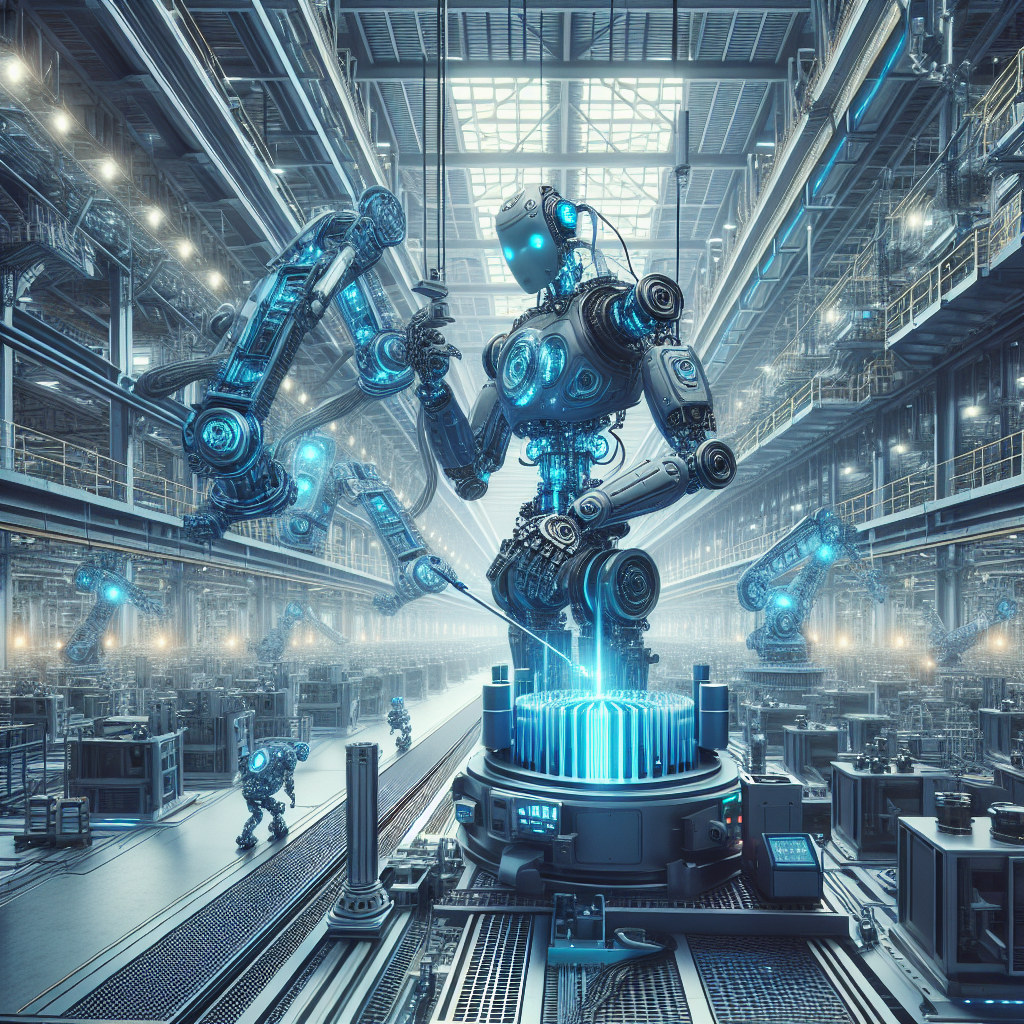In today’s rapidly evolving industrial landscape, predictive maintenance has become a critical strategy for ensuring the efficient and reliable operation of equipment. By leveraging AI tools, industrial companies can proactively identify potential issues before they escalate into costly downtime or equipment failures. This article explores the benefits of using AI tools for predictive maintenance in industrial settings, as well as common challenges and best practices for implementation.
Benefits of Using AI Tools for Predictive Maintenance
1. Improved Equipment Reliability: By analyzing historical data and real-time sensor readings, AI tools can predict when equipment is likely to fail or require maintenance. This proactive approach helps minimize unplanned downtime and extends the lifespan of critical assets.
2. Cost Savings: Predictive maintenance allows companies to schedule maintenance activities at optimal times, reducing the need for expensive emergency repairs and minimizing production losses. AI tools can also help optimize maintenance schedules and inventory levels, leading to cost savings across the board.
3. Increased Safety: By identifying potential equipment failures in advance, AI tools can help prevent accidents and injuries in the workplace. This proactive approach to maintenance ensures that equipment is operating safely and efficiently, protecting both employees and assets.
4. Enhanced Operational Efficiency: AI tools can analyze vast amounts of data to identify patterns and trends that may indicate potential issues with equipment. By leveraging this predictive capability, industrial companies can optimize their maintenance schedules, reduce downtime, and improve overall operational efficiency.
Challenges and Best Practices for Implementing AI Tools for Predictive Maintenance
While the benefits of using AI tools for predictive maintenance are clear, there are also several challenges that companies may encounter when implementing these technologies. Some common challenges include:
1. Data Quality: The success of predictive maintenance relies on the quality and availability of data. Companies must ensure that their data is accurate, reliable, and up-to-date to maximize the effectiveness of AI tools.
2. Integration with Existing Systems: Implementing AI tools for predictive maintenance may require integrating with existing systems, such as enterprise resource planning (ERP) software or asset management systems. Companies must carefully plan and execute these integrations to ensure a seamless transition.
3. Skill Gap: Implementing AI tools for predictive maintenance requires specialized skills and expertise. Companies may need to invest in training or hiring data scientists and AI experts to effectively leverage these technologies.
To address these challenges and maximize the benefits of predictive maintenance, industrial companies can follow several best practices, including:
1. Define Clear Objectives: Before implementing AI tools for predictive maintenance, companies should clearly define their objectives and key performance indicators (KPIs). This will help guide the implementation process and measure the success of the initiative.
2. Start Small: Companies should start small and pilot predictive maintenance initiatives on a small scale before scaling up. This approach allows companies to test the effectiveness of AI tools and fine-tune their processes before rolling them out across the organization.
3. Collaborate Across Departments: Predictive maintenance requires collaboration across departments, including maintenance, operations, IT, and data analytics. Companies should establish cross-functional teams to ensure that all stakeholders are aligned and working towards the same goals.
4. Monitor and Evaluate Performance: Once AI tools for predictive maintenance are implemented, companies should continuously monitor and evaluate their performance. This includes tracking KPIs, analyzing results, and making adjustments as needed to optimize the effectiveness of the tools.
Frequently Asked Questions (FAQs)
Q: What types of equipment can benefit from predictive maintenance using AI tools?
A: AI tools can be used to predict maintenance needs for a wide range of equipment, including industrial machinery, vehicles, HVAC systems, and more. By analyzing historical data and real-time sensor readings, AI tools can identify potential issues before they escalate into costly downtime or equipment failures.
Q: How does predictive maintenance using AI tools differ from traditional maintenance approaches?
A: Traditional maintenance approaches are often reactive, meaning that maintenance activities are performed in response to equipment failures or issues. Predictive maintenance using AI tools, on the other hand, is proactive and uses data analytics and machine learning algorithms to predict when equipment is likely to fail or require maintenance. This proactive approach helps minimize downtime and maximize equipment reliability.
Q: What are some common challenges companies may face when implementing AI tools for predictive maintenance?
A: Some common challenges companies may face when implementing AI tools for predictive maintenance include data quality issues, integration with existing systems, and a skill gap in data science and AI expertise. To address these challenges, companies should carefully plan and execute their predictive maintenance initiatives, starting small and collaborating across departments.
Q: How can companies measure the effectiveness of predictive maintenance using AI tools?
A: Companies can measure the effectiveness of predictive maintenance using AI tools by tracking key performance indicators (KPIs) such as equipment uptime, maintenance costs, and overall equipment effectiveness (OEE). By continuously monitoring and evaluating these metrics, companies can assess the impact of predictive maintenance on their operations and make adjustments as needed to optimize performance.
In conclusion, using AI tools for predictive maintenance in industrial settings offers numerous benefits, including improved equipment reliability, cost savings, increased safety, and enhanced operational efficiency. While implementing these technologies may pose challenges, following best practices and collaborating across departments can help companies maximize the effectiveness of predictive maintenance initiatives. By defining clear objectives, starting small, and monitoring performance, industrial companies can leverage AI tools to proactively identify and address maintenance needs, ultimately improving overall equipment reliability and efficiency.

